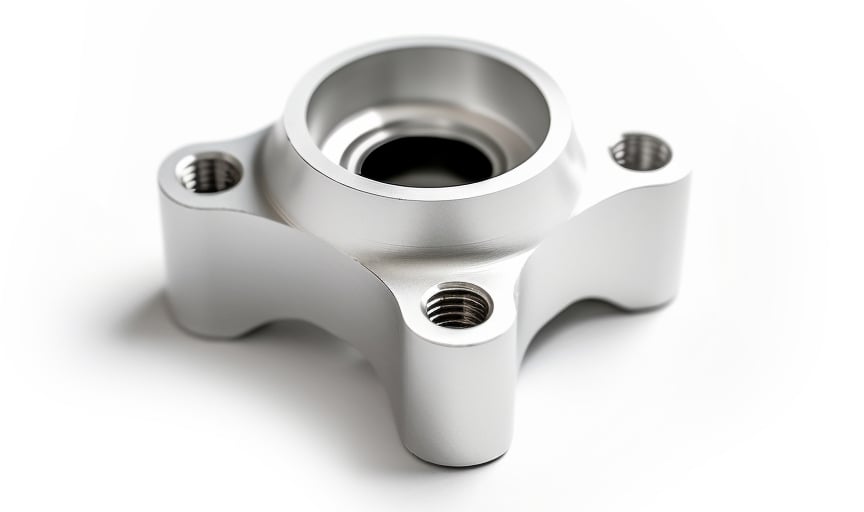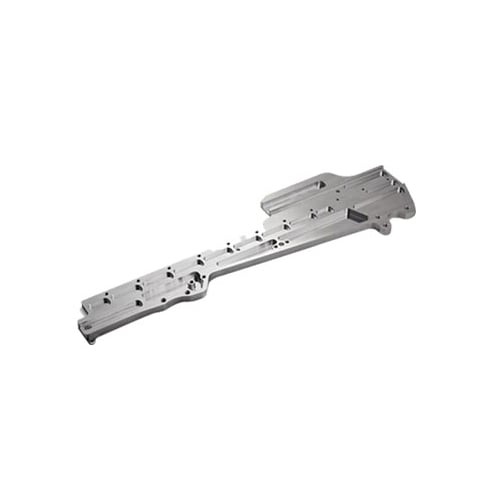This website uses cookies so that we can provide you with the best user experience possible. Cookie information is stored in your browser and performs functions such as recognising you when you return to our website and helping our team to understand which sections of the website you find most interesting and useful.
- Home
- Materials
- CNC Machining Metal
- Aluminum
- Aluminum 2014
Aluminum 2014

Material Type
Metal
Material Name
Aluminum 2014
Alternative Names
3.1255 | 24345 | AlCu4SiMg | A92014
Process Compatibility
CNC Milling, CNC Turning
introduction
CNC Machining Aluminum 2014

Aluminum 2014 is a strong alloy widely used in aerospace. It's easily machinable in specific conditions and often formed into bars and profiles through extrusion.
It is a heat-treatable, high-strength material commonly used in CNC machining. Aluminum 2014 produces small, manageable chips during machining, easing chip evacuation. It responds well to heat treatment processes, with solution heat treatment followed by quenching and aging commonly employed to enhance its mechanical properties. However, its corrosion resistance is not as high as some other aluminum alloys, and precautions are needed during welding due to its copper content. For CNC machining, carbide tools are recommended, and proper cooling is important to dissipate heat and extend tool life. Optimal cutting speeds, feeds, and depths of cut, tailored to the specific machining operation, contribute to achieving high-quality surface finishes.
Aluminum makes up the majority of its composition. Copper is its primary alloying element, ranging from 3.9% to 5%. It has minor amounts of other elements such as the following: chromium not exceeding 0.1%, iron is limited to a maximum of 0.7%, magnesium between 0.2% and 0.8%, manganese spanning from 0.4% to 1.2%, silicon varying from 0.5% to 1.2%, titanium not surpassing 0.15%, and zinc capped at 0.25%. Additionally, each remaining element is limited to a maximum of 0.05%, and the total sum of all remaining elements combined is restricted to 0.15%. The combined percentage of titanium and zinc is set at a maximum of 0.2%.
Properties
Properties Table of Aluminum 2014
| MECHANICAL PROPERTIES | |
|---|---|
| Ultimate Tensile Strength | 190-245 MPa |
| Yield Strength | 100-125 MPa |
| Young's Modulus(Elasticity) | 72-73.3 GPa |
| Elongation at Break | 11-16 % |
| Physical Properties | |
| Corrosion Resistance | Poor |
| Magnetism | Non-magnetic |
| Weldability | Fair |
| Thermal Properties | |
| Maximum Service Temperature | 210°C |
| Thermal Expansion Coefficient | 23-24.4 x 10^-6/°C |
| Thermal Conductivity | 150-154 W/(m·°C) |
| Electrical Properties | |
| Electrical Resistivity | 4.32 μΩ*cm |
TECHNOLOGY OVERVIEW
Basic Knowledge of Aluminum 2014
What is Aluminum 2014?
2014 aluminum alloy is widely used in the aerospace industry due to its strength and hardness. Before 1954, it was known by the industry designation "14S" before adopting The Aluminum Association alloy designations. It is easily machinable in certain conditions but challenging to weld as it tends to crack. Among the 2000-series aluminum alloys, it is the second most popular after 2024.
This alloy is commonly extruded and forged but has poor corrosion resistance. To address this issue, it is often coated with pure aluminum. If left uncoated and exposed to the elements, it is recommended to be painted for corrosion protection.
Advantages of Aluminum 2014
Excellent strength-to-weight ratio.
Suitable for efficient and precise machining.
Can undergo heat treatment for enhanced mechanical properties.
Good Formability
Can be welded using various techniques.
Retains strength at higher operating temperatures.
Commonly used in aircraft structures for weight reduction and strength.
Applications of Aluminum 2014
Aircraft components
Bicycle frames
High-pressure hydraulic pistons
Automotive suspension parts
Precision-machined parts
Electronic heat sinks
Marine structural elements
FAQ
Machining Aluminum 2014 Buying FAQ
Other Materials

Aluminum 6063
Aluminum 6063 is mainly composed of aluminum, magnesium, and silicon. Its excellent machinability makes it commonly used in CNC processes.

Aluminum 6061
Aluminum 6061 (CNC) is the most popular aluminum alloy. It has good strength-to-weight ratio, excellent machinability and natural corrosion resistance.

Aluminum 2024
Aluminum 2024 is a widely used alloy known for its high strength-to-weight ratio and is popular in aerospace applications.
Get An Accurate Quote For Your Next Projects
No matter your project is complicated or simple, no matter is metal or plastic, you will get an accurate quotation within 6 hours.
Get A Quote Today